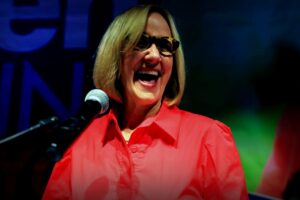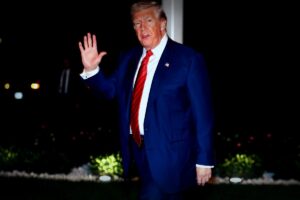Over the weekend, a significant wave of diplomatic activity kicked off after President Trump revealed plans to meet with Russian President Vladimir Putin in Alaska next week. European leaders quickly moved to ensure that Ukraine’s fate wouldn’t be overlooked during these crucial talks.
On Saturday, European officials gathered hastily in the English countryside for discussions with Vice President JD Vance. They made it clear that, although they support Trump’s outreach to Putin, any potential peace negotiations must be prefaced by a ceasefire while ensuring Ukraine’s direct involvement.
Currently, Ukrainian President Volodymyr Zelensky has not been officially invited to join the Alaska summit set for Friday. Still, according to insiders, the White House has not entirely ruled out his participation in any discussions, though the timing remains uncertain, as indicated by one official who mentioned any engagement involving Zelensky would likely follow after the Trump-Putin meeting.
The Alaska summit is forming quite rapidly, and many details surrounding it remain up in the air, including the precise location.
A White House spokesperson revealed that Trump is still considering a trilateral summit including both leaders but emphasized that plans are currently focused on the bilateral meeting that Putin has requested.
Since Trump’s announcement Friday on social media regarding his meet-up with Putin, efforts behind the scenes have escalated to get U.S. allies on the same page.
While Trump’s statement did not address either the inclusion of Zelensky or when he might be brought into the discussions, both Zelensky and European leaders have underscored the importance of Ukraine being part of negotiations aimed at resolving the ongoing conflict.
During the meeting on Saturday, European officials outlined their requirements and sought clarification from U.S. representatives about the plan that Putin outlined during his meeting on Wednesday with U.S. envoy, Steve Witkoff.
Per Western officials, they highlighted several critical factors: Ukraine must play a role in the discussions, a ceasefire needs to come into effect prior to any negotiations, and if Ukraine were to make territorial concessions, Russia would have to reciprocate regarding land it currently controls.
In a joint statement released afterwards, the leaders of France, Italy, Germany, Poland, the UK, the European Union, and Finland voiced their support for Trump’s efforts to bring an end to the violence in Ukraine while highlighting the critical need for a just peace.
However, they also articulated conditions for a peace process that appear to deviate from the suggestions Putin has put forth, which include substantial territorial concessions.
The leaders agreed that Ukraine must have the autonomy to determine its future, emphasizing that effective negotiations should only proceed in the context of a ceasefire. The statement clearly stated, ‘The current line of contact should be the basis for negotiation,’ alongside a commitment to uphold international borders against modifications by force.
Moreover, any resolution to this conflict needs to ensure robust security guarantees enabling Ukraine to defend its sovereignty and territorial integrity.
The European leaders’ summation of a response to the fast-paced diplomatic dynamics highlights ongoing concerns stemming from Witkoff’s earlier talks held in Moscow.
When pressed for details about the proposed adjustments to territory, Trump mentioned on Friday that there might be ‘some swapping of territories’ involved.
The European perspective elaborates on Putin’s proposal, suggesting it would necessitate the transfer of full control of the eastern Donbas region to Russia, which is partially under its occupation. However, the finer details of the proposition are still indistinct, even after several follow-up discussions between Secretary of State Marco Rubio, Witkoff, and European leaders.
There was also uncertainty regarding the status of two other strategically important regions on Russia’s radar, Kherson and Zaporizhzhia, both of which are only partially occupied by Russian forces, along with concerns about future U.S. security provisions.
Considering this backdrop, European leaders are eager to gather further insights on prospective terms of a ceasefire.
To help ease some of these worries, Vance organized an extensive meeting on Saturday involving the UK Foreign Secretary David Lammy, as well as various European and Ukrainian representatives to share the U.S. vision for the negotiations, along with an understanding of Russia’s approach. Witkoff joined the meeting virtually.
A U.S. official later informed CNN that substantial progress had emerged from these discussions, yet it remained unclear if both European and Ukrainian parties endorsed the plan approaching Friday’s critical meeting.
Post-meeting, Zelensky expressed optimism, saying he felt that the U.S. is indeed listening to Ukraine’s concerns.
‘Our arguments are being noted, and the risks involved are being acknowledged,’ he stated in a recent address.





















